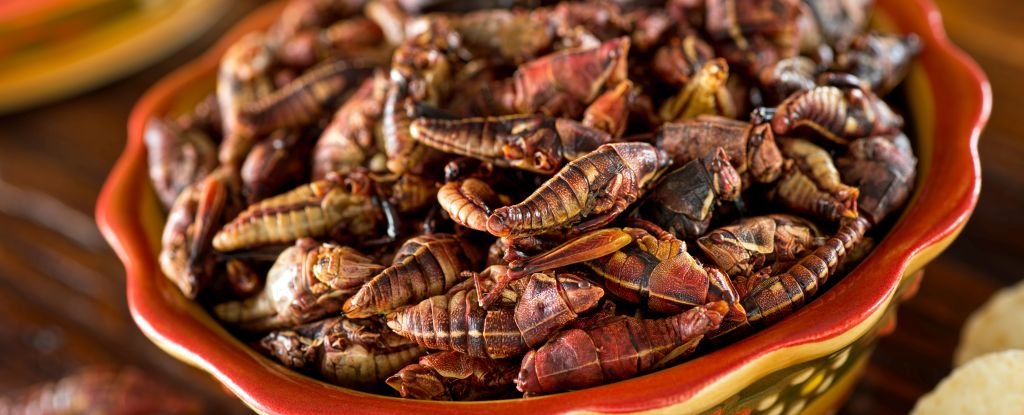You are using an out of date browser. It may not display this or other websites correctly.
You should upgrade or use an alternative browser.
You should upgrade or use an alternative browser.
R
Robrites
Eating Crickets Does Something Really Good to Your Gut Bacteria, Study Finds
Eating Crickets Does Something Really Good to Your Gut Bacteria, Study Finds

Bon appetit! ¯\_(ツ)_/¯
MICHELLE STARR 6 AUG 2018
If you want a healthy gut, crickets might just be the best thing for your menu. A new randomised, double-blind clinical crossover trial has found that munching on the protein-rich insects increases healthy gut bacteria - and may reduce inflammation in the body.
Many people feel totally squicked out by the idea of eating bugs, but a growing body of research suggests that it's the way of the future.
Global population continues to rise, and raising livestock is extremely hard on the environment, using tremendous land and water resources, and releasing vast amounts of methane into the atmosphere.
We know insects are a viable food source for humans, because, according to estimates at least, they make up part of the diet of at least 2 billion people around the world.
And research suggests that our bodies are actually really good at digesting them - not to mention they are nutritionally rich, packed with protein, vitamins, minerals and healthy fats.
"There is a lot of interest right now in edible insects," said nutritional scientist Valerie Stull of the University of Wisconsin-Madison Nelson Institute for Environmental Studies.
"It's gaining traction in Europe and in the US as a sustainable, environmentally friendly protein source compared to traditional livestock."
But insects also contain fibre, such as chitinous fibre in their exoskeletons, that is different from the dietary fibre in fruits, vegetables and grains.
Since dietary fibre promotes the growth of "good" bacteria, or probiotics, in the gut, what does insect fibre do to our microbiome, the complex and mysterious symbiotic microbes that live inside us? That's what Stull and her team set out to discover.
They recruited 20 healthy adults between the ages of 18 and 48. For two weeks, half of this group ate for breakfast a muffin or a shake including 25 grams of powdered crickets, while the other half ate the muffin or shake without crickets.
This was followed by a two-week period of normal, cricket-free eating to "reset" the body, and then the two groups switched. Neither the study participants, nor the researchers, knew which group was eating the crickets.
During the testing period, blood and stool samples were taken from the participants, and gastrointestinal questionnaires were filled out both prior to the clinical trial, and after each two-week cricket-eating period.
The blood was tested for a variety of health measures to assess liver function, as well as an enzyme associated with inflammation, and the stool was tested for changes in the microbiota, and inflammatory chemicals in the gastrointestinal tract.
None of the participants reported feeling any different on their questionnaires, and the researchers found no overall changes or side effects in either the gastrointestinal tract or overall microbial composition.
What they did find was an increase in a metabolic enzyme associated with gut health, and a drop in an inflammatory protein in blood plasma called TNF-alpha, which has been implicated in a range of ailments including cancer, major depression, Alzheimer's disease, and inflammatory bowel disease.
They also found a significant rise in a bacterium called Bifidobacterium animalis - on average, it increased 5.7-fold on a diet that included cricket flour. This bacterium is one of the good guys, having been implicated in a range of health benefits, including an increased immune response, and better gastrointestinal health and comfort.
Of course it's important to remember that the study is a small one, and further, larger studies will need to be undertaken to see if the results can be replicated. But it's looking pretty positive - and represents yet another potential benefit to eating bugs, among the many already posed.
"This very small study shows that this is something worth looking at in the future when promoting insects as a sustainable food source," Stull said.
Meanwhile, if you want to hoe into some fried locusts - and if you can find some - have at it!
Source : https://www.sciencealert.com/eating-crickets-good-for-gastrointestinal-health-microbiome-inflammation-double-blind-randomised?perpetual=yes&limitstart=1
RMS

Eating Crickets Does Something Really Good to Your Gut Bacteria, Study Finds

Bon appetit! ¯\_(ツ)_/¯
MICHELLE STARR 6 AUG 2018
If you want a healthy gut, crickets might just be the best thing for your menu. A new randomised, double-blind clinical crossover trial has found that munching on the protein-rich insects increases healthy gut bacteria - and may reduce inflammation in the body.
Many people feel totally squicked out by the idea of eating bugs, but a growing body of research suggests that it's the way of the future.
Global population continues to rise, and raising livestock is extremely hard on the environment, using tremendous land and water resources, and releasing vast amounts of methane into the atmosphere.
We know insects are a viable food source for humans, because, according to estimates at least, they make up part of the diet of at least 2 billion people around the world.
And research suggests that our bodies are actually really good at digesting them - not to mention they are nutritionally rich, packed with protein, vitamins, minerals and healthy fats.
"There is a lot of interest right now in edible insects," said nutritional scientist Valerie Stull of the University of Wisconsin-Madison Nelson Institute for Environmental Studies.
"It's gaining traction in Europe and in the US as a sustainable, environmentally friendly protein source compared to traditional livestock."
But insects also contain fibre, such as chitinous fibre in their exoskeletons, that is different from the dietary fibre in fruits, vegetables and grains.
Since dietary fibre promotes the growth of "good" bacteria, or probiotics, in the gut, what does insect fibre do to our microbiome, the complex and mysterious symbiotic microbes that live inside us? That's what Stull and her team set out to discover.
They recruited 20 healthy adults between the ages of 18 and 48. For two weeks, half of this group ate for breakfast a muffin or a shake including 25 grams of powdered crickets, while the other half ate the muffin or shake without crickets.
This was followed by a two-week period of normal, cricket-free eating to "reset" the body, and then the two groups switched. Neither the study participants, nor the researchers, knew which group was eating the crickets.
During the testing period, blood and stool samples were taken from the participants, and gastrointestinal questionnaires were filled out both prior to the clinical trial, and after each two-week cricket-eating period.
The blood was tested for a variety of health measures to assess liver function, as well as an enzyme associated with inflammation, and the stool was tested for changes in the microbiota, and inflammatory chemicals in the gastrointestinal tract.
None of the participants reported feeling any different on their questionnaires, and the researchers found no overall changes or side effects in either the gastrointestinal tract or overall microbial composition.
What they did find was an increase in a metabolic enzyme associated with gut health, and a drop in an inflammatory protein in blood plasma called TNF-alpha, which has been implicated in a range of ailments including cancer, major depression, Alzheimer's disease, and inflammatory bowel disease.
They also found a significant rise in a bacterium called Bifidobacterium animalis - on average, it increased 5.7-fold on a diet that included cricket flour. This bacterium is one of the good guys, having been implicated in a range of health benefits, including an increased immune response, and better gastrointestinal health and comfort.
Of course it's important to remember that the study is a small one, and further, larger studies will need to be undertaken to see if the results can be replicated. But it's looking pretty positive - and represents yet another potential benefit to eating bugs, among the many already posed.
"This very small study shows that this is something worth looking at in the future when promoting insects as a sustainable food source," Stull said.
Meanwhile, if you want to hoe into some fried locusts - and if you can find some - have at it!
Source : https://www.sciencealert.com/eating-crickets-good-for-gastrointestinal-health-microbiome-inflammation-double-blind-randomised?perpetual=yes&limitstart=1
RMS

Parrot trapped on roof for three days tells rescuers to ‘f**k off!’
Parrot trapped on roof for three days tells rescuers to ‘f**k off!’

A foul-mouthed parrot, who was stuck on the roof of a London home for three days, told firefighters to “f**k off” when they tried to come to her aid.
Jessie the Macaw parrot escaped from her home in Cuckoo Hall Lane in the Edmonton area of London and got trapped on a neighbor’s roof. After the bird’s owner and the RSPCA animal charity failed to coax her down they called in the fire brigade to resolve the situation.
The owner told the firefighter to say “I love you” as he approached Jessie to bond with her and to get her to co-operate. However the affectionate words fell on deaf ears as Jessie told her rescuer to “f**k off”.
Watch Manager Chris Swallow, who was at the scene, said: “We then discovered that she had a bit of a foul mouth and kept swearing, much to our amusement.”
The parrot and its owner also speak Turkish and Greek, so the firefighter tried to talk to her in those languages however that also proved fruitless and the bird continued to swear.
It soon became clear that, contrary to her owner’s fears, Jessie wasn’t injured. After she finished excoriating her rescuer the bird simply flew off towards its owner.
“Thankfully it soon became apparent that Jessie was fine and uninjured as she flew off to another roof and then to a tree,” Swallow explained.
The London Fire Brigade has repeatedly asked people not to contact it looking for help with trapped animals. A spokesperson said Jessie’s owner did the correct thing by not contacting it until had already contacted the RSPCA and had exhausted all other options.
“As with this incident, the RSPCA should be contacted in the first instance and we would always urge people to do the same if they see an animal stuck or in distress. If the RSPCA require our assistance, they will call us and we are happy to assist with our specialist equipment.”
Source: https://www.rt.com/uk/435896-parrot-swear-firefighter-london/
RMS

Parrot trapped on roof for three days tells rescuers to ‘f**k off!’

A foul-mouthed parrot, who was stuck on the roof of a London home for three days, told firefighters to “f**k off” when they tried to come to her aid.
Jessie the Macaw parrot escaped from her home in Cuckoo Hall Lane in the Edmonton area of London and got trapped on a neighbor’s roof. After the bird’s owner and the RSPCA animal charity failed to coax her down they called in the fire brigade to resolve the situation.
The owner told the firefighter to say “I love you” as he approached Jessie to bond with her and to get her to co-operate. However the affectionate words fell on deaf ears as Jessie told her rescuer to “f**k off”.
Watch Manager Chris Swallow, who was at the scene, said: “We then discovered that she had a bit of a foul mouth and kept swearing, much to our amusement.”
The parrot and its owner also speak Turkish and Greek, so the firefighter tried to talk to her in those languages however that also proved fruitless and the bird continued to swear.
It soon became clear that, contrary to her owner’s fears, Jessie wasn’t injured. After she finished excoriating her rescuer the bird simply flew off towards its owner.
“Thankfully it soon became apparent that Jessie was fine and uninjured as she flew off to another roof and then to a tree,” Swallow explained.
The London Fire Brigade has repeatedly asked people not to contact it looking for help with trapped animals. A spokesperson said Jessie’s owner did the correct thing by not contacting it until had already contacted the RSPCA and had exhausted all other options.
“As with this incident, the RSPCA should be contacted in the first instance and we would always urge people to do the same if they see an animal stuck or in distress. If the RSPCA require our assistance, they will call us and we are happy to assist with our specialist equipment.”
Source: https://www.rt.com/uk/435896-parrot-swear-firefighter-london/
RMS

David Crosby Talks Marijuana, His Upcoming Weed Brand & Joni Mitchell
David Crosby Talks Marijuana, His Upcoming Weed Brand & Joni Mitchell

David Crosby has been smoking marijuana for so long, it’s time to name a strain after him.
The founding member of The Byrds and Crosby, Stills, Nash & Young is seeking licensing opportunities with a cannabis brand under the suggested moniker “Mighty Croz.”
It’s the next chapter in a lifelong relationship with weed for a musician whose name, songs, politics — and facial hair — are synonymous with the 1960s counterculture. With state after state legalizing recreational marijuana, Crosby says now is the right time for him to formally enter the business of pot.
“I’m going for the highest quality,” Crosby, 76, tells High Times. “Anything that has my name on it is going to have to be the highest quality. My first priority is partnering with a leading cannabis company.”
Much like the American auto industry of the 1950s, Crosby predicts the weed industry will consolidate.
“Big companies eat each other, compete with each other, combine with each other and there will wind up being a few national and international companies that are the centers of it, probably 10 or a dozen. One of those I would like to do a deal with.”
A Pot Brand For Boomers
When asked why he’s launching “Mighty Croz,” Crosby has a simple answer.
“Because it’s fun,” he says with a cackle. “Getting high is fun, people who get high are fun, marijuana is fun and I like to have fun in my life.
“’Mighty Croz’ will be aimed at the same demographic that’s likely to own a copy of ‘If I Could Only Remember My Name,’” according to Crosby and his business partner Steven Sponder.
“Baby boomers, the biggest bump in the population curve. That’s who my audience is,” Crosby says.
“There’s a secondary audience of all of their kids that’s millions of people as well, but the main audience is the baby boomers,” he says, promising more details on the brand soon.
“Mighty Croz” could also represent a welcome income stream for Crosby.
Crosby, who kicks off a European tour in support of his latest album “Sky Trails” later in August, is a vocal critic of the tiny royalties artists are paid by streaming services such as Spotify.
Despite songwriting credits on classics like “Déjà Vu,” “Eight Miles High” and “Wooden Ships,” the singer earns most of his income from live performances.
‘It’s Much Better For People’
Crosby’s preferred method of getting high today is vaping homegrown flowers with a PAX 3, he discloses. Most extracts aren’t clean enough for Crosby’s liking, and he says if any extract were to carry his name, it would be one that’s free of aftertaste or chemicals.
Cannabis, he says, is the best and safest route to an altered state.
The singer’s history with harder drugs is well-documented: a long, destructive freebase cocaine addiction ended with five months in a Texas prison in 1986. In 1994, he underwent a liver transplant.
“It’s much better for people than the other available ways to get loaded,” Crosby says of marijuana. “The human race has always liked getting loaded. That’s why we invented fermenting and distilling — and ate every kind of fruit and berry in the jungle.”
Crosby remembers being one of the first in his Laurel Canyon circle to source sinsemilla — a revelation compared to the seedy brick weed he’d been buying by the kilo.
Fresh out of The Byrds, he’d just returned to California with then-girlfriend Joni Mitchell and was preparing to produce her debut album Song to a Seagull, released in 1968.
“I’d get groups of friends together and give them a joint or two of this spectacularly strong pot they had never encountered before, and then Joni would sing them a song or two.”
‘I Wanted To Hide Under The Piano’
Crosby shared his fond memories of old-school strains such as Maui Wowie.
“Maui Wowie was the name that the guys who grew in Kona used, and the guys in Maui called their pot Kona Gold,” Crosby says.
“They mixed everything back in the beginning of the ‘70s. The guys in Hawaii were growing the best pot in the world at the time. They crossbred everything with everything, so I think most of the separations you see people talking about now are theoretical more than actual.”
The strongest pot Crosby ever sampled came from a decidedly less tropical climate: Canada. He crossed the border clean and found some weed that came with a warning.
“It was called ‘Kootenay Thunderfuck’ and it was so goddamned strong, it was way too strong — I wanted to hide under the piano and suck my thumb."
Source: https://hightimes.com/culture/david-crosby-talks-marijuana-his-upcoming-weed-brand-joni-mitchell/
RMS

David Crosby Talks Marijuana, His Upcoming Weed Brand & Joni Mitchell

David Crosby has been smoking marijuana for so long, it’s time to name a strain after him.
The founding member of The Byrds and Crosby, Stills, Nash & Young is seeking licensing opportunities with a cannabis brand under the suggested moniker “Mighty Croz.”
It’s the next chapter in a lifelong relationship with weed for a musician whose name, songs, politics — and facial hair — are synonymous with the 1960s counterculture. With state after state legalizing recreational marijuana, Crosby says now is the right time for him to formally enter the business of pot.
“I’m going for the highest quality,” Crosby, 76, tells High Times. “Anything that has my name on it is going to have to be the highest quality. My first priority is partnering with a leading cannabis company.”
Much like the American auto industry of the 1950s, Crosby predicts the weed industry will consolidate.
“Big companies eat each other, compete with each other, combine with each other and there will wind up being a few national and international companies that are the centers of it, probably 10 or a dozen. One of those I would like to do a deal with.”
A Pot Brand For Boomers
When asked why he’s launching “Mighty Croz,” Crosby has a simple answer.
“Because it’s fun,” he says with a cackle. “Getting high is fun, people who get high are fun, marijuana is fun and I like to have fun in my life.
“’Mighty Croz’ will be aimed at the same demographic that’s likely to own a copy of ‘If I Could Only Remember My Name,’” according to Crosby and his business partner Steven Sponder.
“Baby boomers, the biggest bump in the population curve. That’s who my audience is,” Crosby says.
“There’s a secondary audience of all of their kids that’s millions of people as well, but the main audience is the baby boomers,” he says, promising more details on the brand soon.
“Mighty Croz” could also represent a welcome income stream for Crosby.
Crosby, who kicks off a European tour in support of his latest album “Sky Trails” later in August, is a vocal critic of the tiny royalties artists are paid by streaming services such as Spotify.
Despite songwriting credits on classics like “Déjà Vu,” “Eight Miles High” and “Wooden Ships,” the singer earns most of his income from live performances.
‘It’s Much Better For People’
Crosby’s preferred method of getting high today is vaping homegrown flowers with a PAX 3, he discloses. Most extracts aren’t clean enough for Crosby’s liking, and he says if any extract were to carry his name, it would be one that’s free of aftertaste or chemicals.
Cannabis, he says, is the best and safest route to an altered state.
The singer’s history with harder drugs is well-documented: a long, destructive freebase cocaine addiction ended with five months in a Texas prison in 1986. In 1994, he underwent a liver transplant.
“It’s much better for people than the other available ways to get loaded,” Crosby says of marijuana. “The human race has always liked getting loaded. That’s why we invented fermenting and distilling — and ate every kind of fruit and berry in the jungle.”
Crosby remembers being one of the first in his Laurel Canyon circle to source sinsemilla — a revelation compared to the seedy brick weed he’d been buying by the kilo.
Fresh out of The Byrds, he’d just returned to California with then-girlfriend Joni Mitchell and was preparing to produce her debut album Song to a Seagull, released in 1968.
“I’d get groups of friends together and give them a joint or two of this spectacularly strong pot they had never encountered before, and then Joni would sing them a song or two.”
‘I Wanted To Hide Under The Piano’
Crosby shared his fond memories of old-school strains such as Maui Wowie.
“Maui Wowie was the name that the guys who grew in Kona used, and the guys in Maui called their pot Kona Gold,” Crosby says.
“They mixed everything back in the beginning of the ‘70s. The guys in Hawaii were growing the best pot in the world at the time. They crossbred everything with everything, so I think most of the separations you see people talking about now are theoretical more than actual.”
The strongest pot Crosby ever sampled came from a decidedly less tropical climate: Canada. He crossed the border clean and found some weed that came with a warning.
“It was called ‘Kootenay Thunderfuck’ and it was so goddamned strong, it was way too strong — I wanted to hide under the piano and suck my thumb."
Source: https://hightimes.com/culture/david-crosby-talks-marijuana-his-upcoming-weed-brand-joni-mitchell/
RMS

R
Robrites
America's hottest export? Sperm
America's hottest export? Sperm
Ella Rasmussen’s doctors started to prod her about children when she turned 30. She was single, suffered from endometriosis, and contemplated a hysterectomy. After several years, the nudges took hold. Because she wasn’t a good candidate to freeze only her eggs, she was advised to undergo IVF and freeze fertilized embryos.
My IVF life: the fake ass, the trigger shot and how I decided to get pregnant. In 2016 Rasmussen, then living in Queensland in Australia, decided to take the plunge. A friend offered his services, but she worried that if she knew the father, but he wasn’t involved, she or her child could feel hurt. If she wanted sperm, she’d have to buy it.
For Rasmussen, a striking brunette of multi-ethnic background, looks or an attraction to the donor weren’t a factor. Neither was race; it would be difficult to match what she knew of her own ethnic background anyway. She wanted someone who might fit her family personality-wise. That included a love of music and a sense of humor.
In Australia, Rasmussen found fewer than 10 potential local donors. Her doctor told her that “because there’s such a small number of male sperm donors in Queensland, the quality isn’t very high, particularly as these particular men have been donating sperm for some time, and they are older generally”.
Her doctor made a recommendation: go American.
Her fertility center gave her the password to a protected site – the catalogue. It contained a mix of Australian and American men. “Go and have fun with it,” the andrologist suggested. “Invite your girlfriends around, have some wine and cheese, and choose a donor.”
Rasmussen didn’t like that idea. Instead, in the midst of the most modern method of starting a family, she embarked on the most old-fashioned: she let her father choose.
“My dating life has been kind of a running joke in the family. At that point I didn’t want to make a decision alone. I also thought it would be kind of nice to involve my father,” she said.
Sign up for Guardian Today Australian edition: the stories you need to read, in one handy email
Read more
“He took my laptop and he logged in and he sat there looking very serious for about 45 minutes, and then he handed it back to me and said, ‘There’s only one.’” He wouldn’t tell her which, she recalled, laughing. “So I went through myself and had a look and in the end I came to exactly the same conclusion. I said the code number, and he’s like, ‘Yup.’”
For both father and daughter, the 23-year old, dark-haired American with a touch of acne was a clear-cut, one-in-20 standout.
On the 17-page file provided to clients, he wrote that he became a donor because “he wanted to spread his awesome genes throughout the world,” which, Rasmussen acknowledges, “was such an arrogant thing to say. It made me laugh because it really showed me how young he was. I felt like he was joking when he said that, like he was saying it to be tongue-in-cheek. We hope.”
Demand for US sperm is on the rise. Not just American; Danish semen is also used by women around the world. The reasons are as varied and distinctive as each country’s own regulations and approach to bioethics and business.
Sperm from the US and Denmark dominate the market because those countries currently have the most supply, experts say. It’s unclear whether their rivalry is serious or in jest, but US-based California Cryobank and Denmark’s Cryos International each insist that their sperm repository is biggest.
California Cryobank claims it is the largest sperm bank in the world by “any metric”; Scott Brown, director of client experience, noted that the firm has a pool of roughly 600 donors and a track record of 75,000 live births globally since 1977. The company has locations in Palo Alto, Los Angeles, Cambridge, Massachusetts, and New York.
In Denmark, Cryos, the superstore for Viking sperm, is the main player. “California Cryobank is definitely the largest in the United States, but worldwide, we absolutely crush them,” Corey Burke, the tissue bank director at Cryos International’s Florida outpost, told the Guardian.
“In Europe alone, we have close to 1,400 active and real donors; in the US around 200 donors,” Burke said. “We sell to over 100 countries worldwide. We own Europe. If you want sperm in Europe, Cryos comes up, always,” added Burke. The email signature on Cryos emails boasts: “The highest number of registered pregnancies in the world.”
About 90% of Danish sperm goes to other EU countries, said Karlstad University’s Sebastian Mohr, who wrote a book on Danish sperm banks.
One reason the US and Denmark are the heaviest hitters in the global sperm market: Laws allowing anonymity for donors, said Ayo Wahlberg, an anthropology professor at the University of Copenhagen.
“The repeal of anonymity in many parts of the western world totally changed the game” in the past 10 to 15 years, Wahlberg said. While most European countries don’t allow anonymity, Denmark still does. “As soon as [anti-anonymity] legislation kicks in, numbers plummet.”
Diane Abbott: 'Before going to bed, I wrap my hair and have a cup of camomile tea'
Read more
California Cryobank changed its policy this year, to take only non-anonymous donations going forward. Historically, heterosexual couples have tended to favor anonymous donations and offspring whose physical resemblance wouldn’t give rise to questions about paternity. However, with lesbian and single mothers, the use of a donor is obvious, and clients and their children tend to be curious about their backgrounds.
“The concept of being an anonymous donor now is pretty hard to control, with services like 23andMe and Ancestry anyway,” California Cryobank’s Brown said. “Suggesting to a donor he could remain anonymous seemed like it wasn’t realistic.”
At California Cryobank, the current breakdown is: 308 anonymous donors; 116 “open donors”, who agree to be contacted through the bank as an intermediary; and 134 “ID disclosure”, who agree to direct contact, said Brown. In all cases, any relationship is initiated exclusively by the offspring, not the donor.
Laws dictating how many families or children a single donor can provide also affect a country’s sperm practice. For example, in the UK one donor can only endow 10 families domestically. In Spain, which mandates anonymous donation, it’s six live births (factoring in a donor’s own children).
The US has no limit to how many families can use one donor. In Denmark, one man can contribute to 12 families, maximum. But internationally, he may provide to six couples in Sweden and eight in Switzerland, and so on. “It’s not exactly illegal,” said Wahlberg. “One donor in Denmark could father 30, 50, 80 children. Who knows?”
There are other factors that affect sperm supply. In the US, Denmark and China (which has a massive sperm bank but does not export), donors are paid or compensated relatively comparable amounts (ranging from $30 to $130 per sample). In the UK, Canada, Australia and many European Union countries, donors must be “altruistic”: payment is forbidden. Travel and childcare expenses may be reimbursed.
Then there’s technology. “Testing and screening in the US is far more advanced, and there is a lot of diversity in the population who are willing to be donors, and obviously a lot of people,” said Fredrik Andreasson, chief finance officer of Seattle Sperm Bank. He said Caucasian sperm is in high demand globally, including in China and India.
Source:https://www.theguardian.com/science/2018/aug/15/americas-hottest-export-sperm-fertility
RMS

America's hottest export? Sperm
Ella Rasmussen’s doctors started to prod her about children when she turned 30. She was single, suffered from endometriosis, and contemplated a hysterectomy. After several years, the nudges took hold. Because she wasn’t a good candidate to freeze only her eggs, she was advised to undergo IVF and freeze fertilized embryos.
My IVF life: the fake ass, the trigger shot and how I decided to get pregnant. In 2016 Rasmussen, then living in Queensland in Australia, decided to take the plunge. A friend offered his services, but she worried that if she knew the father, but he wasn’t involved, she or her child could feel hurt. If she wanted sperm, she’d have to buy it.
For Rasmussen, a striking brunette of multi-ethnic background, looks or an attraction to the donor weren’t a factor. Neither was race; it would be difficult to match what she knew of her own ethnic background anyway. She wanted someone who might fit her family personality-wise. That included a love of music and a sense of humor.
In Australia, Rasmussen found fewer than 10 potential local donors. Her doctor told her that “because there’s such a small number of male sperm donors in Queensland, the quality isn’t very high, particularly as these particular men have been donating sperm for some time, and they are older generally”.
Her doctor made a recommendation: go American.
Her fertility center gave her the password to a protected site – the catalogue. It contained a mix of Australian and American men. “Go and have fun with it,” the andrologist suggested. “Invite your girlfriends around, have some wine and cheese, and choose a donor.”
Rasmussen didn’t like that idea. Instead, in the midst of the most modern method of starting a family, she embarked on the most old-fashioned: she let her father choose.
“My dating life has been kind of a running joke in the family. At that point I didn’t want to make a decision alone. I also thought it would be kind of nice to involve my father,” she said.
Sign up for Guardian Today Australian edition: the stories you need to read, in one handy email
Read more
“He took my laptop and he logged in and he sat there looking very serious for about 45 minutes, and then he handed it back to me and said, ‘There’s only one.’” He wouldn’t tell her which, she recalled, laughing. “So I went through myself and had a look and in the end I came to exactly the same conclusion. I said the code number, and he’s like, ‘Yup.’”
For both father and daughter, the 23-year old, dark-haired American with a touch of acne was a clear-cut, one-in-20 standout.
On the 17-page file provided to clients, he wrote that he became a donor because “he wanted to spread his awesome genes throughout the world,” which, Rasmussen acknowledges, “was such an arrogant thing to say. It made me laugh because it really showed me how young he was. I felt like he was joking when he said that, like he was saying it to be tongue-in-cheek. We hope.”
Demand for US sperm is on the rise. Not just American; Danish semen is also used by women around the world. The reasons are as varied and distinctive as each country’s own regulations and approach to bioethics and business.
Sperm from the US and Denmark dominate the market because those countries currently have the most supply, experts say. It’s unclear whether their rivalry is serious or in jest, but US-based California Cryobank and Denmark’s Cryos International each insist that their sperm repository is biggest.
California Cryobank claims it is the largest sperm bank in the world by “any metric”; Scott Brown, director of client experience, noted that the firm has a pool of roughly 600 donors and a track record of 75,000 live births globally since 1977. The company has locations in Palo Alto, Los Angeles, Cambridge, Massachusetts, and New York.
In Denmark, Cryos, the superstore for Viking sperm, is the main player. “California Cryobank is definitely the largest in the United States, but worldwide, we absolutely crush them,” Corey Burke, the tissue bank director at Cryos International’s Florida outpost, told the Guardian.
“In Europe alone, we have close to 1,400 active and real donors; in the US around 200 donors,” Burke said. “We sell to over 100 countries worldwide. We own Europe. If you want sperm in Europe, Cryos comes up, always,” added Burke. The email signature on Cryos emails boasts: “The highest number of registered pregnancies in the world.”
About 90% of Danish sperm goes to other EU countries, said Karlstad University’s Sebastian Mohr, who wrote a book on Danish sperm banks.
One reason the US and Denmark are the heaviest hitters in the global sperm market: Laws allowing anonymity for donors, said Ayo Wahlberg, an anthropology professor at the University of Copenhagen.
“The repeal of anonymity in many parts of the western world totally changed the game” in the past 10 to 15 years, Wahlberg said. While most European countries don’t allow anonymity, Denmark still does. “As soon as [anti-anonymity] legislation kicks in, numbers plummet.”
Diane Abbott: 'Before going to bed, I wrap my hair and have a cup of camomile tea'
Read more
California Cryobank changed its policy this year, to take only non-anonymous donations going forward. Historically, heterosexual couples have tended to favor anonymous donations and offspring whose physical resemblance wouldn’t give rise to questions about paternity. However, with lesbian and single mothers, the use of a donor is obvious, and clients and their children tend to be curious about their backgrounds.
“The concept of being an anonymous donor now is pretty hard to control, with services like 23andMe and Ancestry anyway,” California Cryobank’s Brown said. “Suggesting to a donor he could remain anonymous seemed like it wasn’t realistic.”
At California Cryobank, the current breakdown is: 308 anonymous donors; 116 “open donors”, who agree to be contacted through the bank as an intermediary; and 134 “ID disclosure”, who agree to direct contact, said Brown. In all cases, any relationship is initiated exclusively by the offspring, not the donor.
Laws dictating how many families or children a single donor can provide also affect a country’s sperm practice. For example, in the UK one donor can only endow 10 families domestically. In Spain, which mandates anonymous donation, it’s six live births (factoring in a donor’s own children).
The US has no limit to how many families can use one donor. In Denmark, one man can contribute to 12 families, maximum. But internationally, he may provide to six couples in Sweden and eight in Switzerland, and so on. “It’s not exactly illegal,” said Wahlberg. “One donor in Denmark could father 30, 50, 80 children. Who knows?”
There are other factors that affect sperm supply. In the US, Denmark and China (which has a massive sperm bank but does not export), donors are paid or compensated relatively comparable amounts (ranging from $30 to $130 per sample). In the UK, Canada, Australia and many European Union countries, donors must be “altruistic”: payment is forbidden. Travel and childcare expenses may be reimbursed.
Then there’s technology. “Testing and screening in the US is far more advanced, and there is a lot of diversity in the population who are willing to be donors, and obviously a lot of people,” said Fredrik Andreasson, chief finance officer of Seattle Sperm Bank. He said Caucasian sperm is in high demand globally, including in China and India.
Source:https://www.theguardian.com/science/2018/aug/15/americas-hottest-export-sperm-fertility
RMS

R
Robrites
R
Robrites
R
Robrites
R
Robrites
R
Robrites
R
Robrites
R
Robrites
R
Robrites
R
Robrites
R
Robrites
R
Robrites
Woman always on vacation in your Instagram feed actually cocaine smuggler
Woman always on vacation in your Instagram feed actually cocaine smuggler

PLAYA DEL CARMEN, MEXICO – After taking a series selfies in a tropical beach paradise, the gorgeous woman in your Instagram feed who always seems to be on vacation loaded a boat full of cocaine and headed for a clandestine port in the US gulf of Mexico.
Nadia Ronin, 24, has lived a life of jet-set luxury for the past five years, according to her timeline. Although many who grew up with her are baffled as to how she’s able to afford such a lifestyle as a “designer” according to her profile, noting that she doesn’t know how to sew, and has never actually posted clothing. Unbeknownst to them, she’s able to use her lifestyle as a cover to smuggle several tons of blow across the border.
“Friends who slay together stay together,” said Ronin in a caption on a recent post featuring her and her accomplice Rebecca Brooks, 22, whom she recruited last year from her family’s vacation. “#BeachGirls #vacation #bikini”
Other than Mexico, her timeline features several exotic locales, including Panama, Colombia, Greece, Monaco, France, Ukraine and Russia, all of which she has successfully evaded drug enforcement authorities by convincing everyone that’s she’s simply a cute, white North America tourist.
At press time, Ronin’s Instagram has gone dark for several weeks after being detained in a Thai prison from which she’ll never escape.
Woman always on vacation in your Instagram feed actually cocaine smuggler
PLAYA DEL CARMEN, MEXICO – After taking a series selfies in a tropical beach paradise, the gorgeous woman in your Instagram feed who always seems to be on vacation loaded a boat full of cocaine and headed for a clandestine port in the US gulf of Mexico.
Nadia Ronin, 24, has lived a life of jet-set luxury for the past five years, according to her timeline. Although many who grew up with her are baffled as to how she’s able to afford such a lifestyle as a “designer” according to her profile, noting that she doesn’t know how to sew, and has never actually posted clothing. Unbeknownst to them, she’s able to use her lifestyle as a cover to smuggle several tons of blow across the border.
“Friends who slay together stay together,” said Ronin in a caption on a recent post featuring her and her accomplice Rebecca Brooks, 22, whom she recruited last year from her family’s vacation. “#BeachGirls #vacation #bikini”
Other than Mexico, her timeline features several exotic locales, including Panama, Colombia, Greece, Monaco, France, Ukraine and Russia, all of which she has successfully evaded drug enforcement authorities by convincing everyone that’s she’s simply a cute, white North America tourist.
At press time, Ronin’s Instagram has gone dark for several weeks after being detained in a Thai prison from which she’ll never escape.
R





 Lmao.
Lmao.









